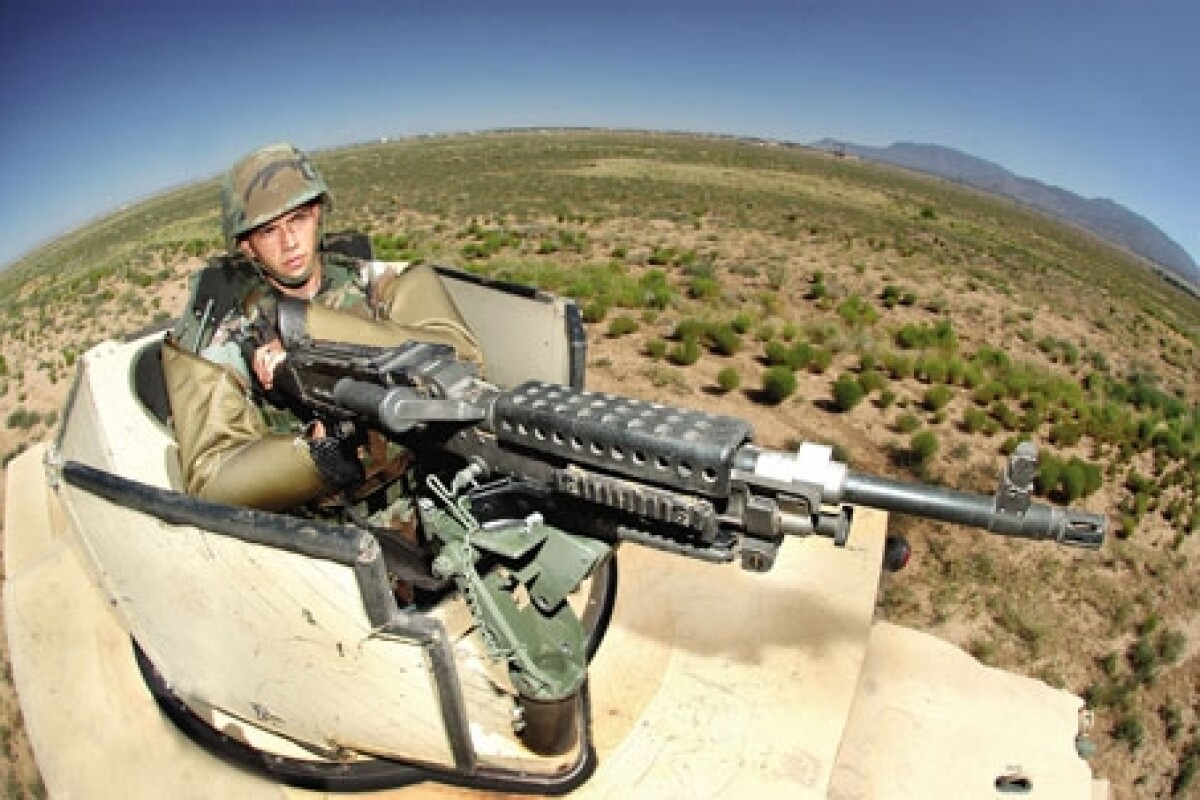The almost universal use of Kevlar armoured vests by US soldiers has resulted in a big increase in arm injuries from combat situations. The Kevlar vests have proven to be so effective that they are reducing deaths, but those that survive do so with arms often damaged beyond repair due to burns and shrapnel penetration. A new arm-armour known as the Sandia Gauntlet could prove to be the solution to the problem.
Researchers at the National Nuclear Security Administration's Sandia National Laboratories have created gauntlets that will aid in saving arms of military personnel riding atop Humvees and other military vehicles during combat.
The shoulder-length Sandia Gauntlets are made of layers of heavy Kevlar - reinforced material used in bulletproof vests and tyres - with carbon-composite forearm and upper arm protective inserts. The heat protection characteristics of the Kevlar layers mitigate the thermal effects of warhead blasts on tissue, while the combination of carbon-composite and Kevlar diminish both blunt trauma effects and penetration or shredding effects of warhead shrapnel on both tissue and bone.
"If the Sandia Gauntlets can protect just one soldier, sailor, airman, or marine from losing an arm, then the effort will be well worth it," said Jack Jones, project lead and Sandia physical security specialist. Jones and Jim Purvis, with the assistance of Larry Whinery and Richard Brazfield from Sandia's Parachute lab, designed and fabricated the gauntlets.
The carbon-composite inserts were fabricated by a local small business specializing in composites. Purvis conceived the idea during an overseas trip, in mid October 2003 after reading about a soldier who lost his arms during the Iraq war. Soon after, the technical requirements were discussed with other Sandia experts. The Parachute Lab was contacted concerning the availability of Kevlar material at Sandia and the laboratory's ability to construct a prototype.
Several design options were engineered, and a refined prototype was designed in November. Jones said several prototypes were constructed and functionally tested with military personnel in a mission environment. Sandia's Steven Todd and Brandon Ahrens conducted an explosive test on the prototype.
In December, several Sandia Gauntlet sets were given to the 1-82 FA, 1st Cavalry Division out of Ft. Hood, Texas; 515th Corps Support Battalion, 720th Transportation Company; and the US Air Force 355th Logistics Readiness Squadron/CCDE.
The gauntlets were then shipped to forces in Iraq for recommendations. The gauntlets were well received there, said Jones. Recommendations for modifications were provided to Sandia, and improvements to the prototypes were made. Sandia criteria were for a one-size-fits-all design with blunt trauma protection for the hand, wrist and elbow, as well as heat and blast protection.
The primary recommendations from the field tests included straps to hold the gauntlets in place and modifications to the forearm armor to increase flexibility and maneuverability. Army and Air Force members requested that the Sandia Gauntlets be attached in the rear (left and right sleeve) with a quick-release buckle. This allows wearers to shed the gauntlets after an initial attack if they must fight in a dismounted role, said Jones.
Other suggestions included adding a neoprene sleeve inside the forearm to allow for a more secure fit and placing a thumb-hole in the composite to ensure the Sandia Gauntlet rotates and moves with the lower arm. Military personnel also preferred cutting the composite back from the knuckles to the wrist, said Jones.
"This would allow the wearer more dexterity when using the Sandia Gauntlets for loading and charging a weapon system, driving or acting as an assistant driver," said Jones. Several military units have inquired about the gauntlets and would like to know when they will be available for full usage, he said.
"Army doctors report a large increase in personnel losing their arms above the elbow," said Jones. "Prior to the use of Kevlar armored vests, many died. Now they are surviving, but their arms are too mangled to repair due to burns and shrapnel penetration damage."
Jones said as far as he knows no other group has been working to develop a system to protect US service members and allies while riding exposed in cupolas and losing limbs from blast affects.






